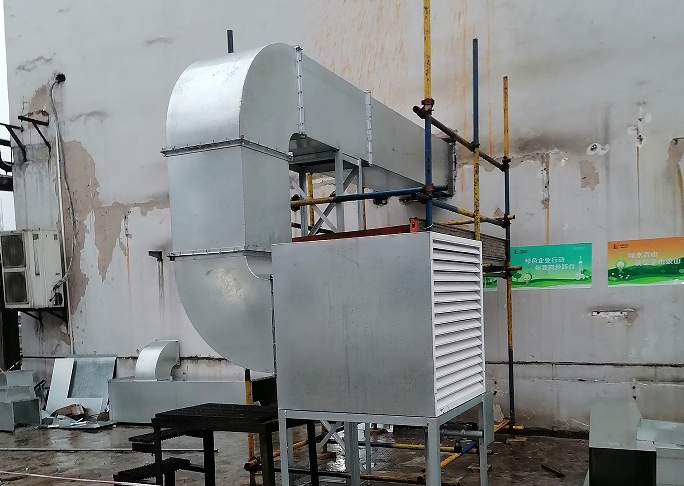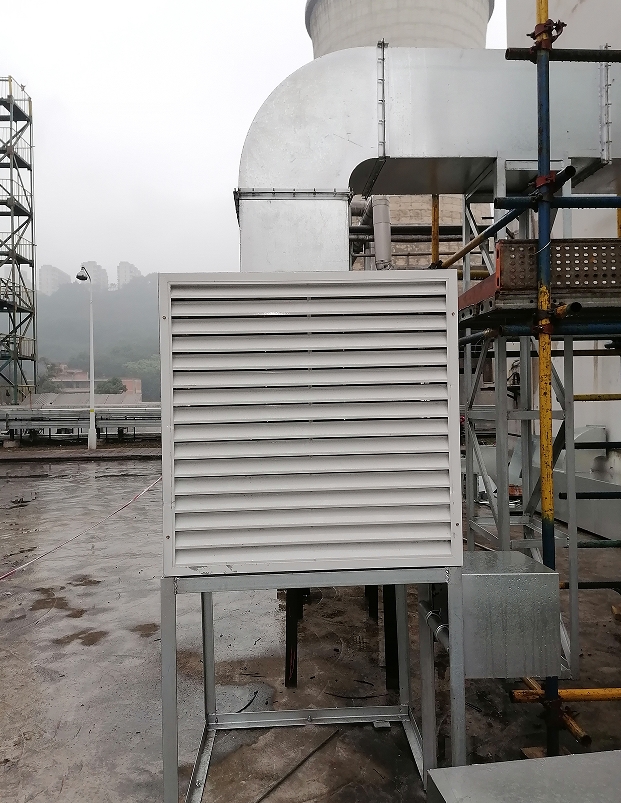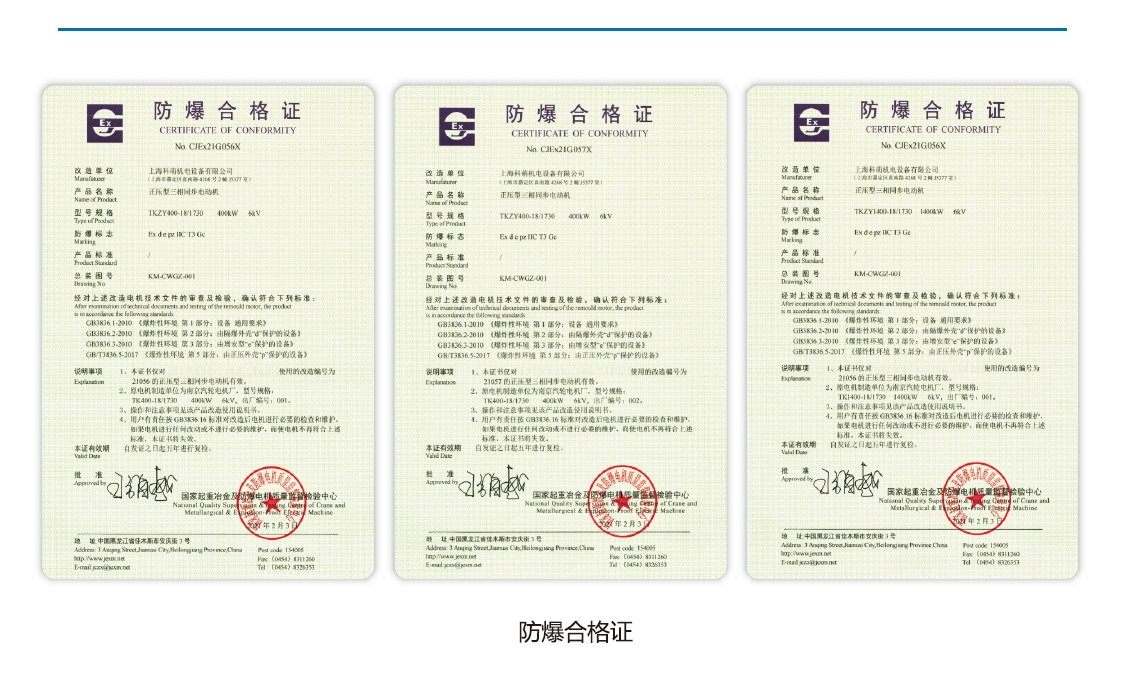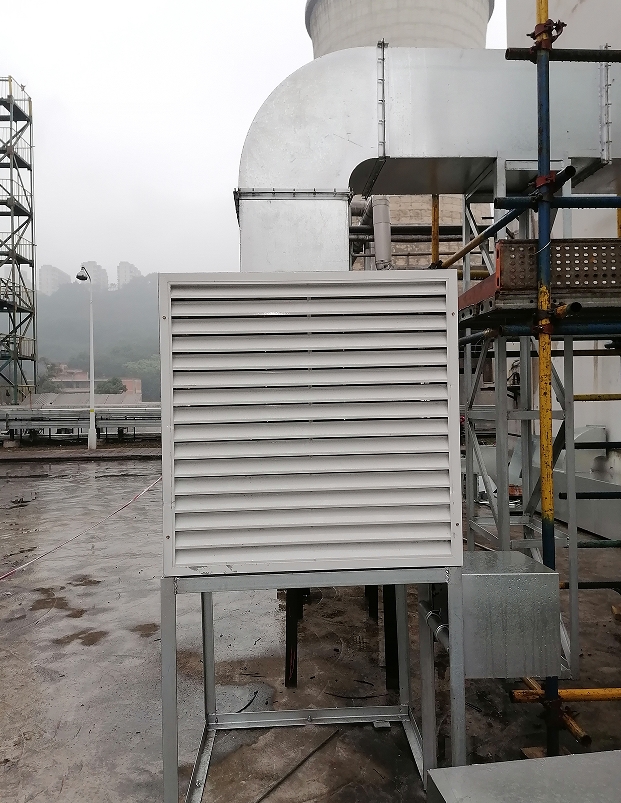User: Sinopec Group Sichuan* Chemical Company
Motor: Nanjing Turbine Motor Factory
XX device C102A/B non-explosion-proof motor hidden danger management project
Transformation goals
Advanced, reliable and mature technology is used to carry out explosion-proof transformation on the motor. The explosion-proof mark is ExdepzIICT3 Gc and the protection level is not less than IP43. The transformation makes it meet the explosion-proof requirements of Zone II. All electrical and instrument components are required to be able to withstand the maximum temperature of 45℃ for a long time. To operate, the control box must meet the explosion-proof requirements of Zone II. The control box is made of 304 stainless steel (wall thickness not less than 3mm), explosion-proof grade ExdIICT3, and protection grade IP54 or above; the box body adopts bottom cable inlet and bottom outlet method, and the inlet and outlet should be equipped with cable clamping sealing joints.
The modified motor equipment cannot reduce the performance of the original equipment, and all indicators can meet the usage requirements. It must be ensured that it can operate safely, continuously and effectively, and there must not be any problems that affect normal operation due to motor modification. Motor failure cannot be caused by dust on the collector ring.
The modified motor passed the explosion-proof inspection by the state-authorized inspection center and obtained the explosion-proof certificate issued by the acceptance agency.
Renovation plan
Positive pressure ventilation explosion-proof principle
Before the motor starts, the ventilation system blows protective gas from the safe area through the air duct into the inside of the motor to discharge any explosive gas that may exist inside the motor. It also sets up pressure alarms and gas detectors to ensure that the motor is running properly. , the inside of the motor maintains a slight positive pressure (not less than 50Pa), and the ventilation system continues to ventilate to ensure that external explosive gases cannot enter the inside of the motor, while ensuring the cooling and heat dissipation requirements of the motor.










